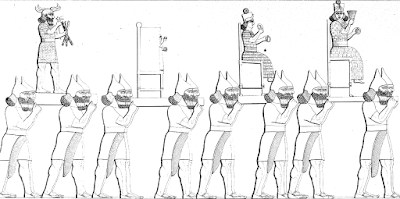- He evolved. As a young man he dreamed only of retiring from military glory to the most traditional sort of planter wealth, but over the course of his life he came to doubt the virtue of war and he turned decisively against slavery and the plantation economy, throwing his administration behind capitalism and free labor.
- Founding a stable democracy in a large, diverse country is one of the most difficult achievements of humanity. That the US did this we owe in part to George Washington's commitment to his own principles, and his refusal to seek or cling to power.
I was inspired to write this by a column from Charles Blow, who wrote,
On the issue of American slavery, I am an absolutist: enslavers were amoral monsters.
The very idea that one group of people believed that they had the right to own another human being is abhorrent and depraved. The fact that their control was enforced by violence was barbaric.
The thing about this absolutism is that it condemns, not just a bunch of famous white Americans, but pretty much everyone who lived between the Neolithic and AD 1800. Every farming and herding society we know of recognized slavery. I really do not know of a single exception, and if there is one somewhere that hardly vitiates the basic point: for 5,000 years, slavery was part of human life. A handful of utopian mystics did occasionally call for its abolition, but they were vanishingly rare and nobody paid them any mind. Even Jesus accepted slavery; is Blow demanding that we take down all his statues? St. Paul told slaves to honor their masters: are we going to rip his letters out of the Bible?
What was new in the modern period was not slavery but the first real movement for the abolition of slavery. This got started in the 1600s but made no real impact until the mid 1700s. It was catapulted to prominence by the Enlightenment and the revolutionary agitation that birthed the American and French Revolutions. Yes, there were a lot of hypocrites who believed in freedom for white men but not for women or slaves, but there were enough who took freedom seriously to start a movement that grew until slavery was banished from Europe and its colonies. It took a century, but sometimes that's how long things take.
I know I have written this before but I keep coming back to it because I think it is supremely important: we only think slavery is bad and democracy good because of the Enlightenment, because of the principles that men like George Washington and Thomas Jefferson fought to make real. If we live in a world that believes in democracy and equal rights, we owe that to them. What amount of failure and hypocrisy on their part is enough to cancel that out? People like Blow seem to think that freedom and democracy are human universals that were somehow corrupted by colonial slavocrats, but in fact they had to be invented. Our whole system of values would simply baffle a medieval or ancient person.
Like others of his time, George Washington lived this change. Raised in a plantation world where slavery was a natural as the blueness of the sky, he only thought of how he could get more land and slaves for himself. Raised in a military culture, he dreamed of battlefield glory. He was so ambitious for military honors that his rashness sparked the Seven Years War between England and France, and he survived only because of the courtesy of an aristocratic French officer. But he changed with the times. A warrior when young, he was a President of peace, whose maxims about avoiding foreign war have been cited by the party of peace in every American generation. Exposed by his political career to other sorts of people and other ideas about society, he came to see that slavery and the whole plantation world were anachronisms that America had to leave behind. He was too moderate a man to call for the immediate abolition of slavery, but he hoped that the progress of business and the spread of democratic ideals would soon render it irrelevant. True, he didn't free his own slaves until he died, but if his whole generation had done that, as many of them promised, American history would have been very different.
Besides the principles of democracy, there is the practice. If you think it should be easy to stage a revolution and then create a democracy, look around the world: at Mexico, Colombia, Brazil, Argentina, Thailand, Egypt. At Venezuela, sliding into chaos. At China, where a heroic attempt to found a Republic collapsed into warlordism and civil war, leading eventually to Mao's bloody tyranny. At France, where the thrill of 1789 led only to Terror and Napoleon. For quite a long time the United States was the only large, diverse democracy in the world, the only example showing that such a thing was even possible. The leaders of Russia and China still think it is impossible for their countries, as do many Brazilians. If you have not paused to consider what an extraordinary achievement this was, perhaps you should.
How many great leaders of men have been offered the chance to seize dictatorial power and then declined it with as much grace as George Washington? I think the stabilization of American democracy owes quite a bit to him personally, and to me that alone is an achievement that justifies all of his honors.
Come to think of it, I have a third thing to say: there are no perfect people. Everyone has sins. Lincoln, as I wrote here recently, supported colonizing freed slaves back to Africa; FDR accepted segregation as the price of the New Deal; US Grant demolished the Confederacy but then allowed the destruction of the Plains Indians. If we're not going to give up on the whole business of putting up statues to heroes, we're going to have to grant people some leeway. It is enough to me that modern figures were on the right side of history, however one might define that. If they took the other side –John Calhoun, Jefferson Davis, etc. – then maybe their statues have to come down. But I think it is a huge mistake to condemn people who worked or fought for freedom because they did not get all the way to where we are now.




















































